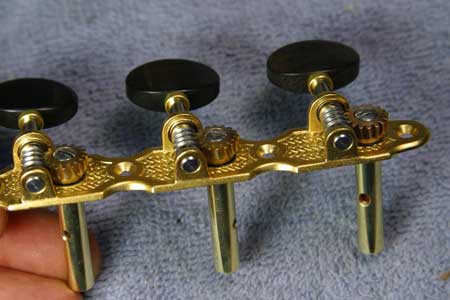Extra long replacement
Guitar Tuner String Post
© Frank Ford 2005;
Photos by FF
My pal, Michihiro Matsuda makes some elegant steel string guitars with slotted headstocks. But, the slots are too wide to accommodate those fine Waverly tuners made by Stewart MacDonald. Eager for another small project, I offered to make him some replacement posts 3/16" longer.
The specs for these posts are fairly liberal (± .003" for most dimensions), except the step diameters and lengths where they mount through and gear. There the tolerances are pretty tight (± .001 and .0005). Since I wanted to make a bunch of these posts, I didn't really want to have to measure each dimension for each one. After thinking about the easiest way to go about this project, I hit on a really simple plan, that went like this:
Post Office Opening Hours
When you need to send a letter, you'll likely be wondering what post office opening times are. Luckily, there are a few tips for finding the closest post office. Listed below are the best times to drop off a letter or package. If you're planning a trip, check out these tips before heading down to the post office. If you're unsure of the opening times of a particular post office, use a branch finder online to find out what hours they're open.
Federal holidays may affect your local post office opening hours. In addition to Christmas Day, the Post Office is closed on Thanksgiving and New Year's Day. However, it is open during limited hours on Christmas Eve and New Year's Eve. There are also some special events that may affect the hours. These dates may vary depending on the location, so be sure to call ahead. You can also call the customer service number at (13 7678) to see if your local post office will be open.
Post office locations are often listed on Google maps, making it easy to find the closest one. Some of them have specific hours or are open all week long. You can also find information on what days they're closed on national holidays. If you're in a hurry, try searching for a post office in your city using the Map tab. For more detailed information, you can visit the website of the Post Office Association of Canada. There, you'll find information about post office opening hours and other information you need.
I decided to make a form tool for the steps:
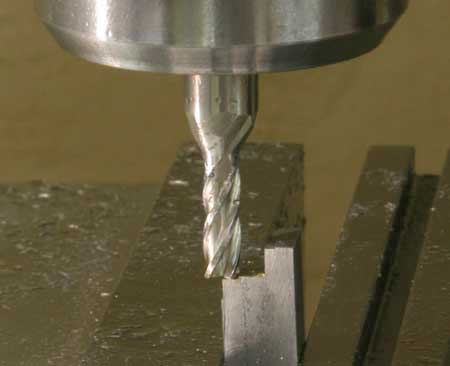
First, I clamped up a piece of water hardening steel in my mill vise at an angle that would give me good clearance as a lathe tool, and then I took a light cut at one edge. I figured that would be even quicker, easier, and potentially more accurate than to use an edge finder to pick up that reference. Zeroing out my DRO, I cut in precisely the distance of the largest diameter step on the post. Then, I zeroed again, and dropped the table using the Z-axis DRO to read exactly half the diameter difference between the first and second steps, and cut a ledge to the length of the second step, and stopped at that.
I was left with a tool that had two steps precisely measured, and a stop
on the end:
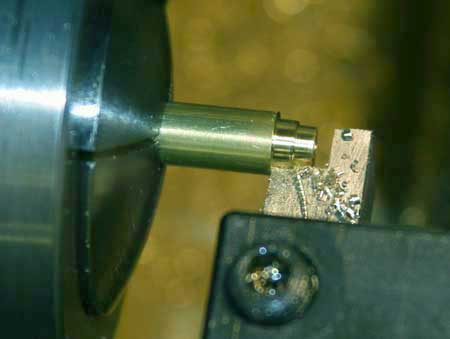
Then, I was able to chuck up a piece of 1/4" brass and run the tool in from the end, while keeping an eye on only one dimension, the diameter of the larger step. With the tool right on center, the second step came out exactly right, and the lengths of the steps were right on the money as soon as I bumped into the end of the brass rod:
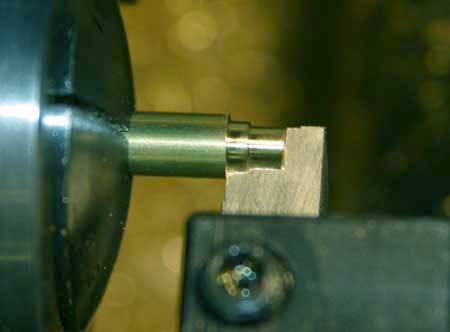
I used my drill chuck in the toolpost because I had a lot of identical holes to drill and I figured it would be way easier than cranking the tailstock in and out about a million times:
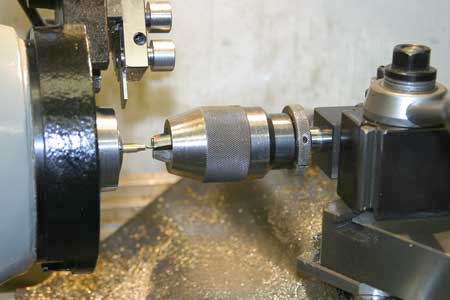
I like making batches of things because working with collets makes this kind of repetitive job go smoothly.
I used my hand tap fixture to run in the 4-40 tap at about 150 RPM:
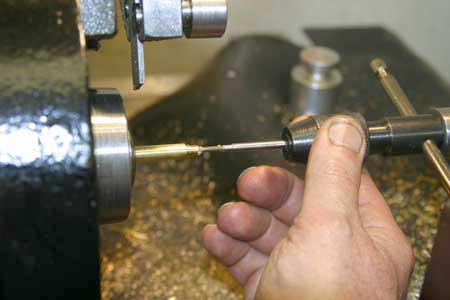
With a small size tap in brass, my fingers made an adequate clutch.
Over on the mill again, I set up my little spin index to mill the flats that would engage the gear:
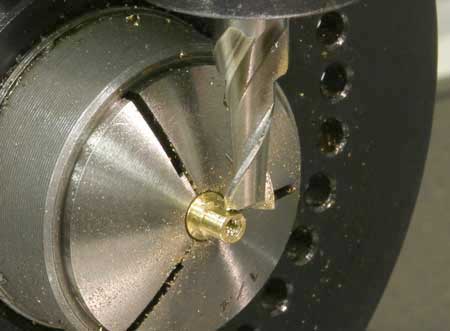
I made these posts as double ended blanks, figuring on parting them off in the middle. Seems I calculated the length of my blanks using the original post dimensions, so cutting them in the middle would have given me standard length ones. I spent some time churning that problem in my head and came up with a use for the short ones, but things would be a bit tight if I used my regular parting blade. I ground one as skinny as I thought I could get away with, and cut the posts off:
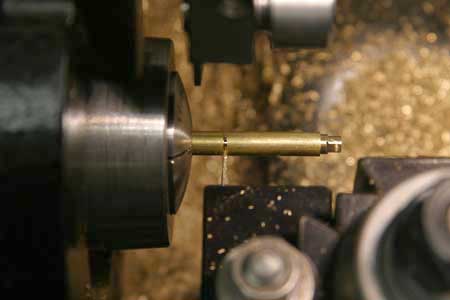
The ends of the posts get a 1/4" radius cut, and by luck, I happened to have the right lathe tool lying around:
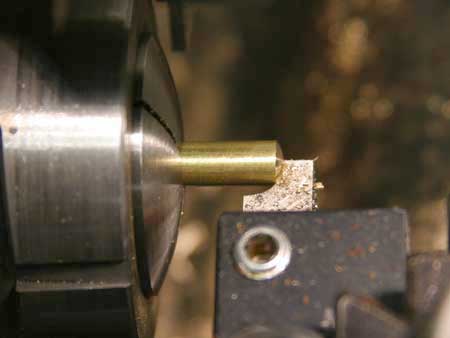
On occasion in the past I'd wished I had a set of the Waverly 3-on-a-plate tuners with short posts for solid pegheads, so I made up my short cutoffs for that use by cutting them appropriately:
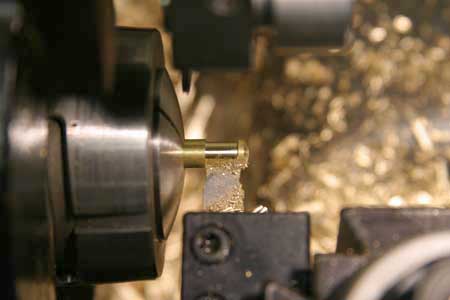
Both sets of posts got the same hole, but in different locations, of course:
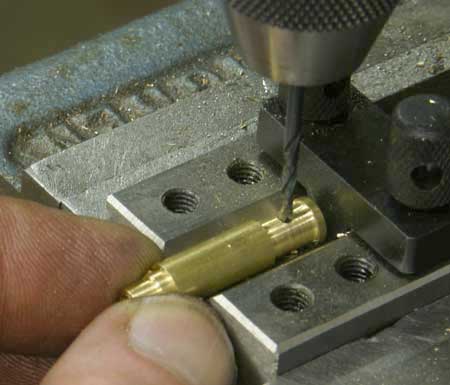
And a quick chamfer with a 90 degree countersink:
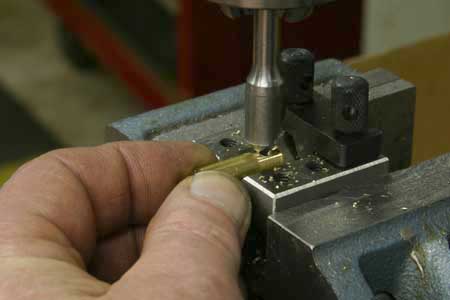
Here they are, long ones for Michi, short ones for me:
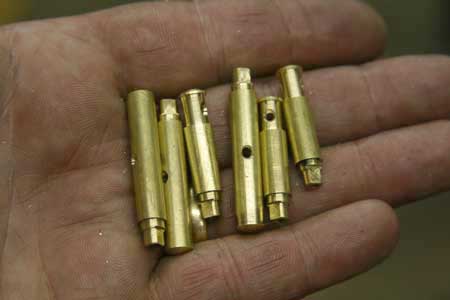
For comparison, the original length posts at the top, and the long ones at the bottom:
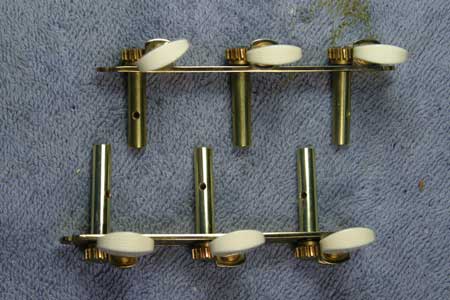
And, below, my solid peghead set - which just might see service on a 1920s L-5 or other fine vintage guitar someday:
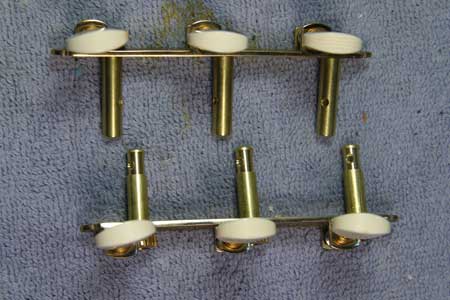
Michi looked over the tuners we had in the shop and hit on the idea of switching out the posts on a set of Stewart MacDonald's "Sloane" classical gears. He was right, they fit perfectly:
